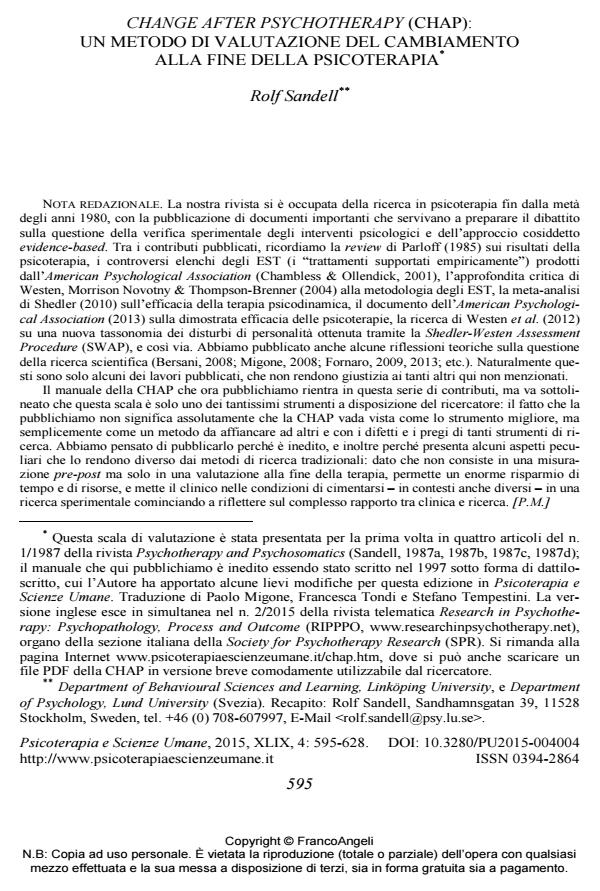Change After Psychotherapy (CHAP): A method for measuring change after the termination of psychotherapy
Journal title PSICOTERAPIA E SCIENZE UMANE
Author/s Rolf Sandell
Publishing Year 2015 Issue 2015/4
Language Italian Pages 34 P. 595-628 File size 158 KB
DOI 10.3280/PU2015-004004
DOI is like a bar code for intellectual property: to have more infomation
click here
Below, you can see the article first page
If you want to buy this article in PDF format, you can do it, following the instructions to buy download credits

FrancoAngeli is member of Publishers International Linking Association, Inc (PILA), a not-for-profit association which run the CrossRef service enabling links to and from online scholarly content.
Change After Psychotherapy (CHAP), formulated by Rolf Sandell in 1987, is a method to measure change after the termination of a psychotherapy, without comparing pre- and post-treatment variables. The CHAP five scales are described (Symptoms, Adaptive Capacity, Self-insight, Basic Conflicts, and Extra-Therapeutic Factors), with data on reliability and norms. One of the interesting aspects of CHAP is that it allows to identify variables not present at the beginning of treatment, i.e., that could not be included in prepost measures since they might appear due to therapy itself. This manual, which was never published before, is an update of a 1997 manuscript.
Keywords: Psychotherapy research, psychotherapy outcome, post-treatment evaluation, quantitative research, qualitative research
- Posouzení změn po ukončení psychoterapie (CHAP): Česká verze manuálu Rolf Sandell, David Holub, Jan Roubal, Tomáš Řiháček, Martina Pourová, Tomáš Peřich, Radim Karpíšek, Michal Nondek, Roman Hytych, Michaela Viktorinová, Miroslava Benešová, (ISBN:978-80-210-9244-0)
Rolf Sandell, Change After Psychotherapy (CHAP): un metodo di valutazione del cambiamento alla fine della psicoterapia in "PSICOTERAPIA E SCIENZE UMANE" 4/2015, pp 595-628, DOI: 10.3280/PU2015-004004